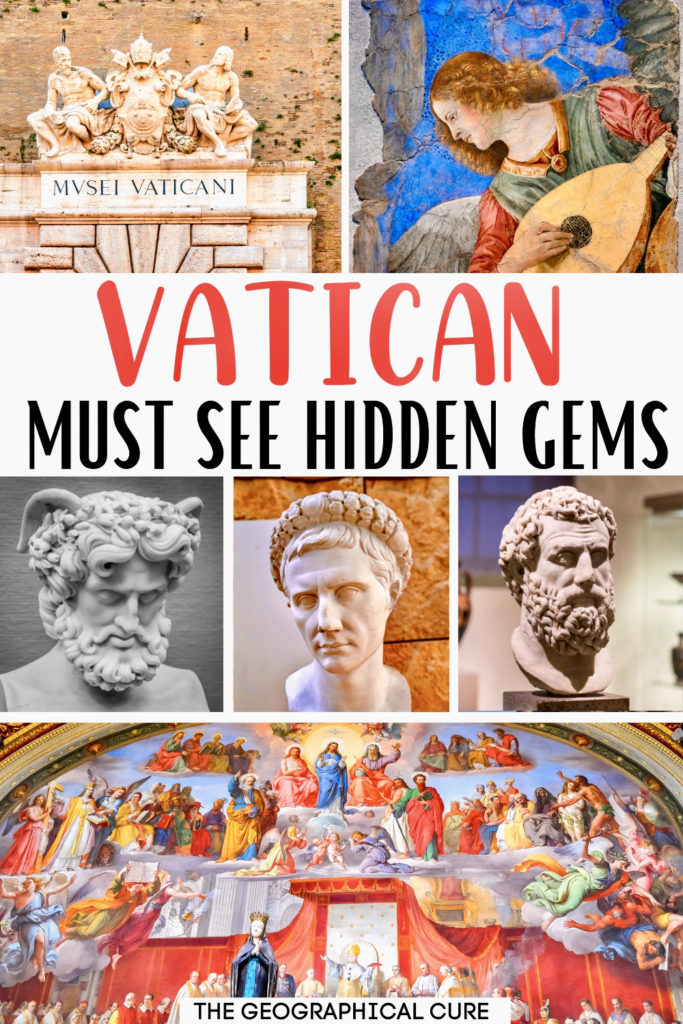Are you a repeat visitor to the Vatican looking for some more unusual things to see? If so, here’s my guide to 21 hidden gems in the Vatican Museums.
The Vatican Museums are an expansive and famous collection of 26 separate museums, with over 70,000 art works adorning their walls. Even with multiple visits, it’s difficult to scratch the surface of this massive collection, which is considered one of the most extensive in art history.
Famous attractions such as the Raphael Rooms, Sistine Chapel, and Round Hall draw crowds that can be overwhelming. However, visitors who want to escape the lines and crowds can discover hidden masterpieces and off the beaten path that are just as rewarding.
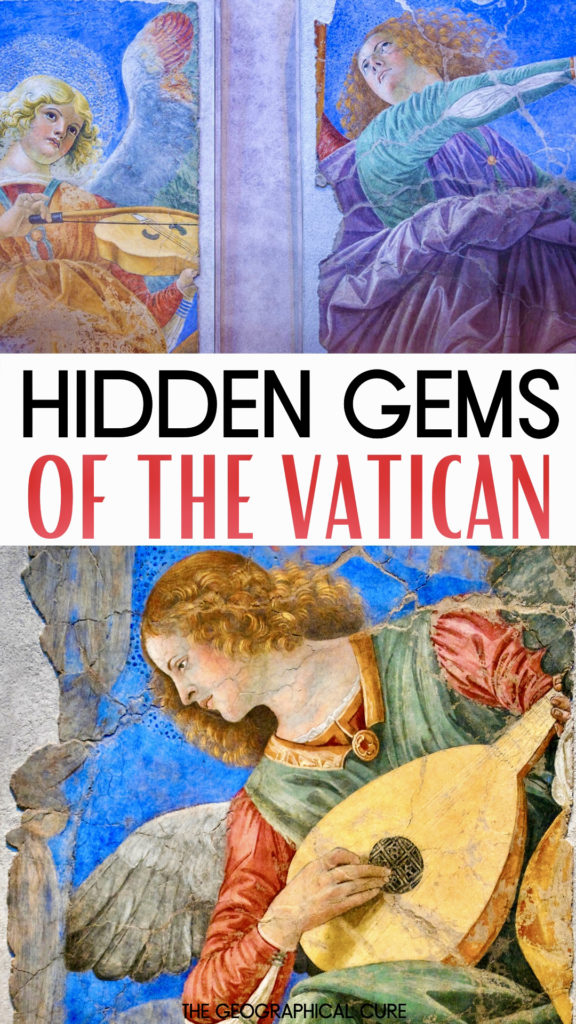
You won’t see these Vatican hidden gems on almost any standard tour. They’re hidden away in the Vatican’s less visited specialty museums. You’ll need to seek them out yourself, armed with a map and audio guide.
If you do, you will escape the crowds and discover some of the Vatican’s most unique art works. In any other museum, these Vatican hidden gems would be stand out masterpieces.
So if you’re wondering whether it’s worth it to visit the Vatican yet again, the answer is definitely yes.
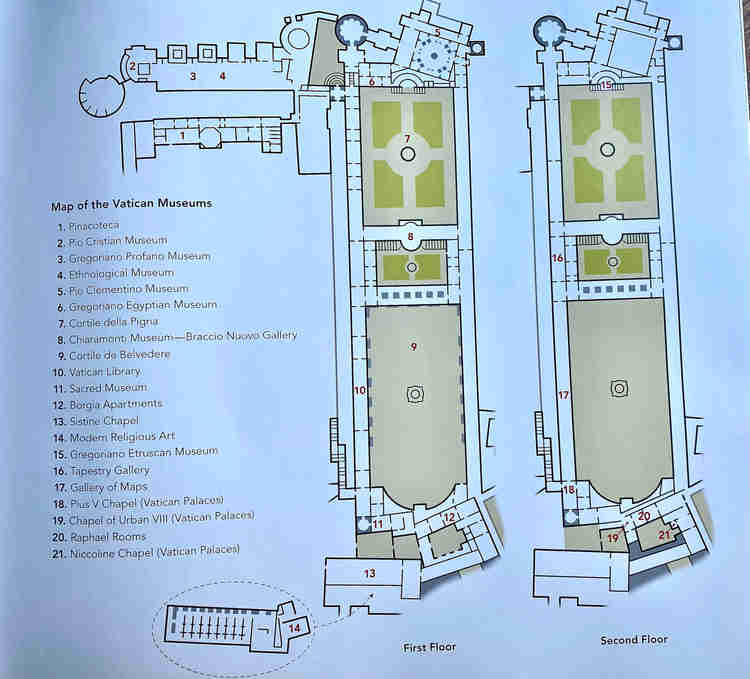
Hidden Gems And Secrets Spots In The Vatican
Here are my picks for the 21 best lesser known highlights and secret spots in the Vatican Museums.
1. Melozzo da Forlì Frescos, Vatican Pinacoteca
Melozzo da Forlì was a fresco painter in the 15th century. He was a bridge between the Early and High Renaissance.
In 1480, Forli was commissioned to paint the apse of the Basilica of Sant Maria degli Angeli. The subject of the work was the ascension of Christ.
READ: Guide To the Most Beautiful Churches in Rome
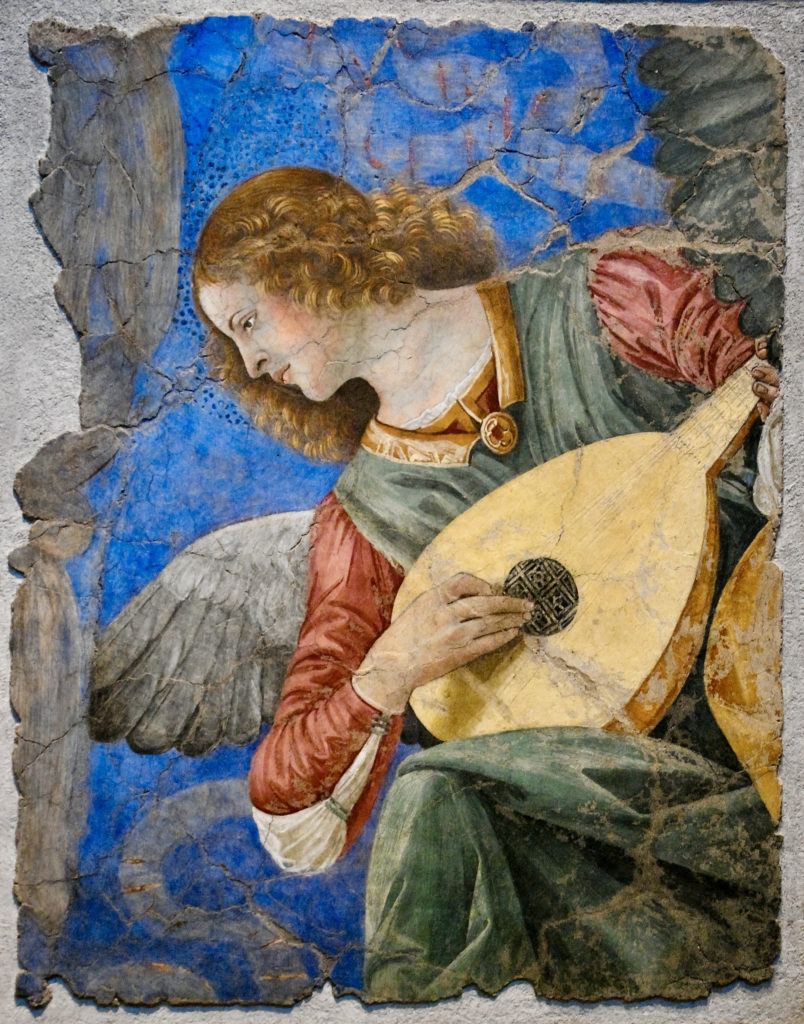
Unfortunately, much of the Forli frescos were destroyed. But fragments made their way to the Vatican.
You can see Forli’s angels and the heads of some of the apostles in the Vatican Pinacoteca, which is the Vatican’s painting gallery. The most famous fragment is the Angel Playing the Lute.
The frescos are ethereal and vividly colored. Forli’s drawing shows the influence of Andrea Mantegna, who may have been Forli’s teacher, and Pierro della Francesca.
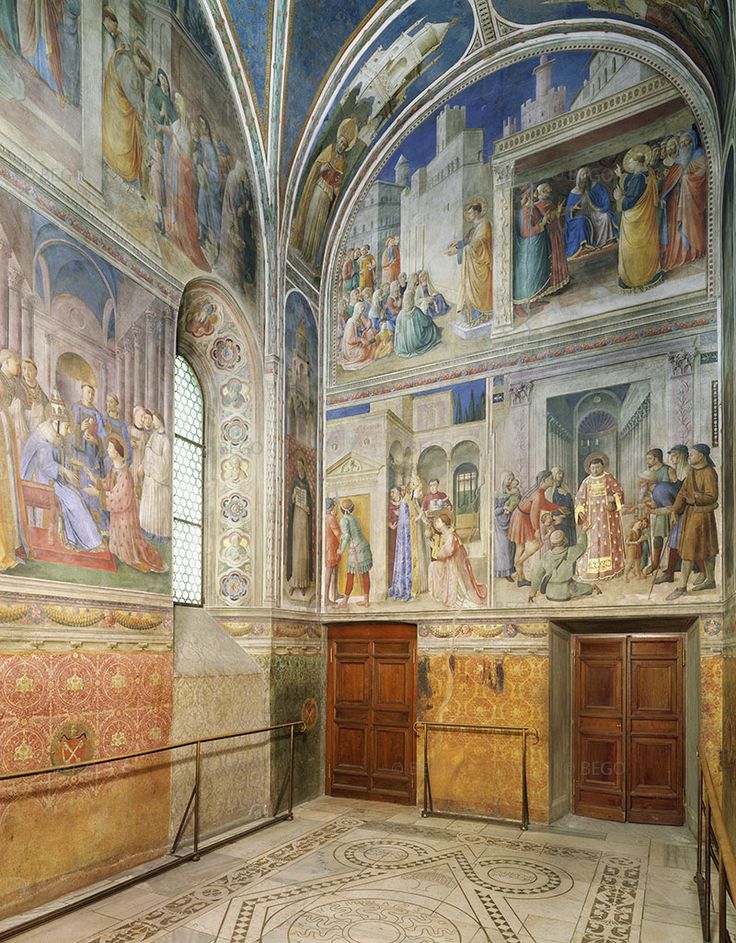
2. The Niccoline Chapel
The Niccoline Chapel is one of the most beautiful rooms in the Vatican, a little jewel box. It once hosted the pope’s conclave, or election, before the Sistine Chapel.
The chapel houses vibrant 15th century Early Renaissance frescoes. They were painted by Fra Angelico and his pupil Benozzo Gozzoli in 1448-49.
Fra Angelico was the most important painter of the Early Renaissance. He was a monk who combined a life of devotion to god and painting. His art works are known for their harmonious and classic beauty.
The two artists turned the chapel’s vault into a starry sky with four evangelists in the center. The walls are painted with scenes from the lives of Saint Stephen and Saint Lawrence.
The most famous scene is Fra Angelico’s Preaching of St. Stephen and St. Stephen Addressing the Council. It’s considered a masterpiece of a mature Fra Angelico. It has the artist’s classic well-balanced composition and harmonious colors.
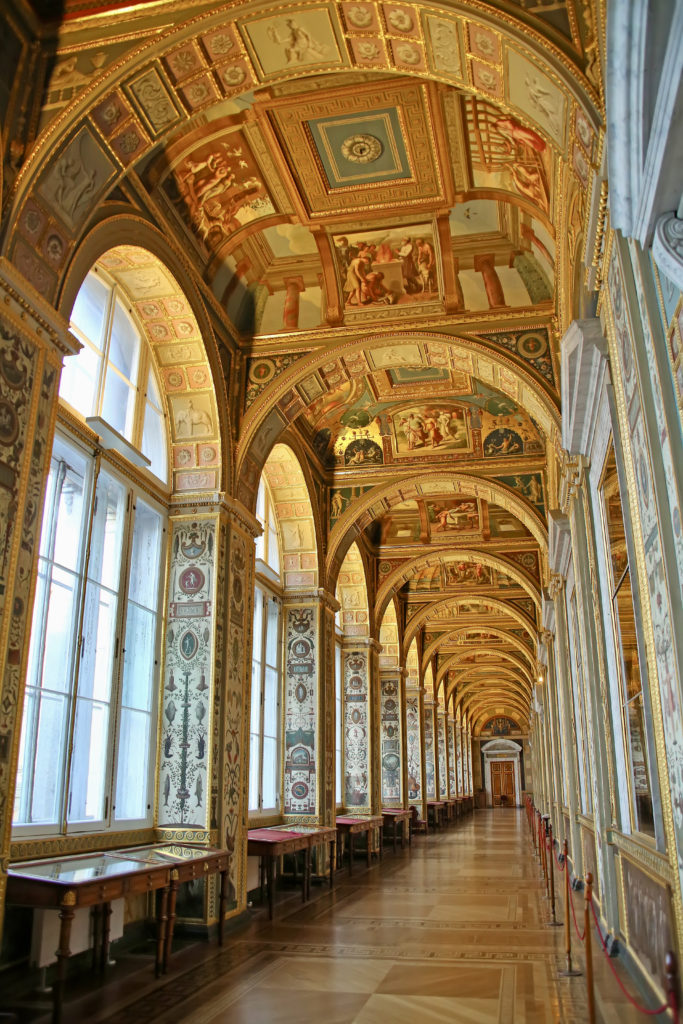
4. Raphael Loggia
The Raphael Loggia is another enchanting hidden gem in the Vatican. Leo X commissioned Raphael and his workshop to paint the space.
It was originally an open air gallery. The writer Baldassarre Castiglione described it as “perhaps the most beautiful creation to have been seen in Rome since antiquity.”
The narrow gallery has 13 vaulted bays with Old and New Testament scenes, called “Raphael’s Bible.” The dominant decorative element are the “grotesque”style frescos. These frescos were popularized after the discovery of frescos in the subterranean ruins of Nero’s 1st century Golden House, Domus Aurea.
The frescos feature both realistic and imaginative human figures, animals, and plants with fantasy elements. The human figures were clearly inspired by Michelangelo’s frescos in the Sistine Chapel.
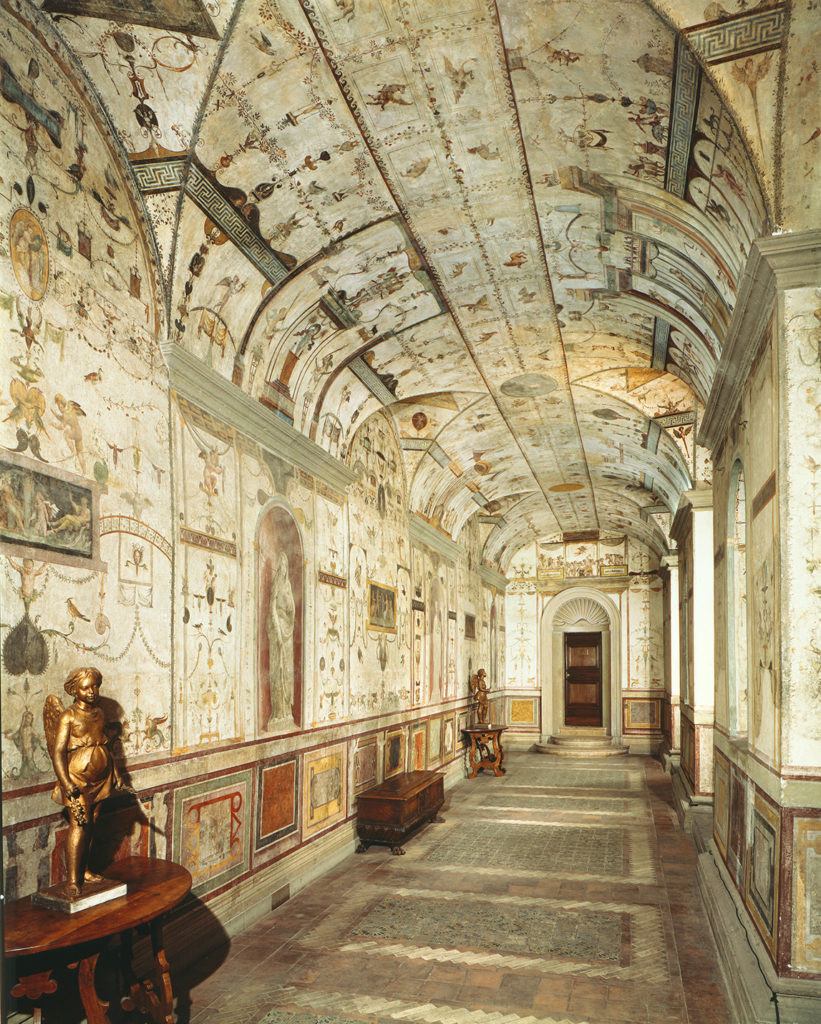
5. Loggia of Cardinal Bibbiena
The Bibbiena Loggia is located just above the Raphael Loggia and likewise was originally an open air gallery. It was also decorated by Raphael and his workshop.
This loggia is composed entirely of grotesque frescos, also inspired by Nero’s Golden House. It’s filled with fanciful and illusionistic architecture, putti, animals, and false niches — similar to those which appear in ancient Roman wall paintings.
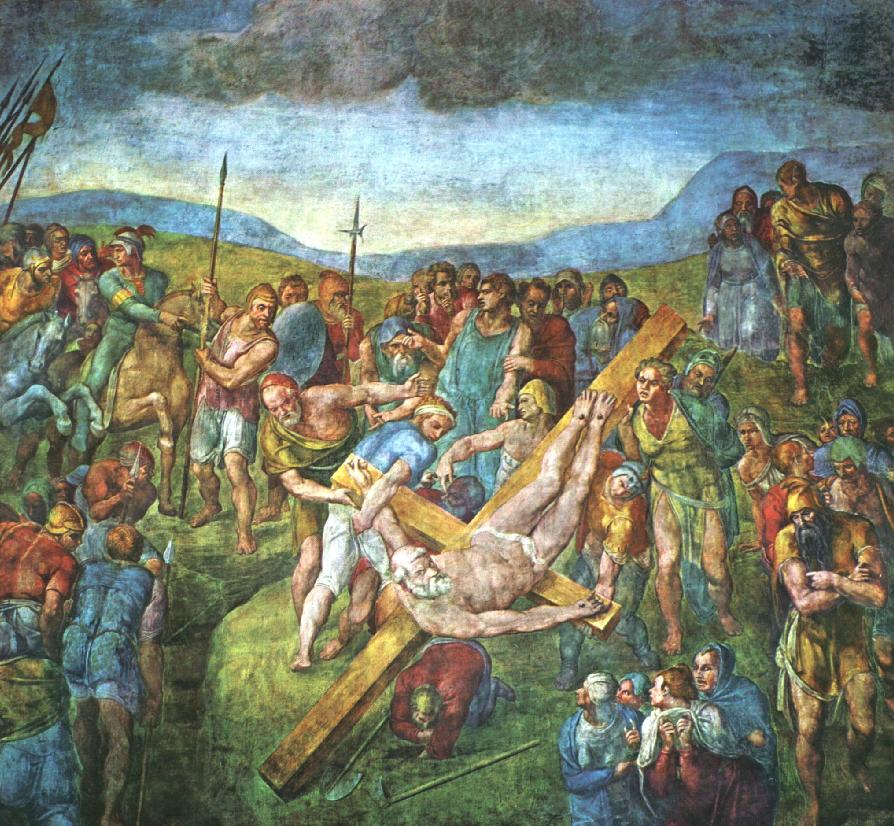
6. Michelangelo Frescos In The Pauline Chapel
Did you know that the Vatican houses works by Michelangelo other than the Sistine Chapel frescos? The Pauline Chapel has the last frescos ever executed by Michelangelo and restored in the early 2000s.
Michelangelo painted the frescos at a time when he was moving away from Renaissance ideals to his late Mannerist style. At the time, The frescos weren’t nearly as popular as his Sistine Chapel works.
In The Crucifixion of St. Peter, Michelangelo portrays St. Peter in the moment in which he was raised, topside down on the cross, by Roman soldiers. Peter is depicted as vital in body and mind despite his great pain.
The white drapery on St. Peter and the nails were added by a later artist, much like underpants were added to the Sistine Chapel frescos. Restoration of the frescos, completed in 2009, revealed an image believed to be a self-portrait of Michelangelo. It’s the figure riding horseback in a blue turban in the far upper left corner of the painting.
Unfortunately, access to the Pauline Chapel is quite limited. It’s typically closed to the public and only open on special occasions. But you can take a virtual tour here.
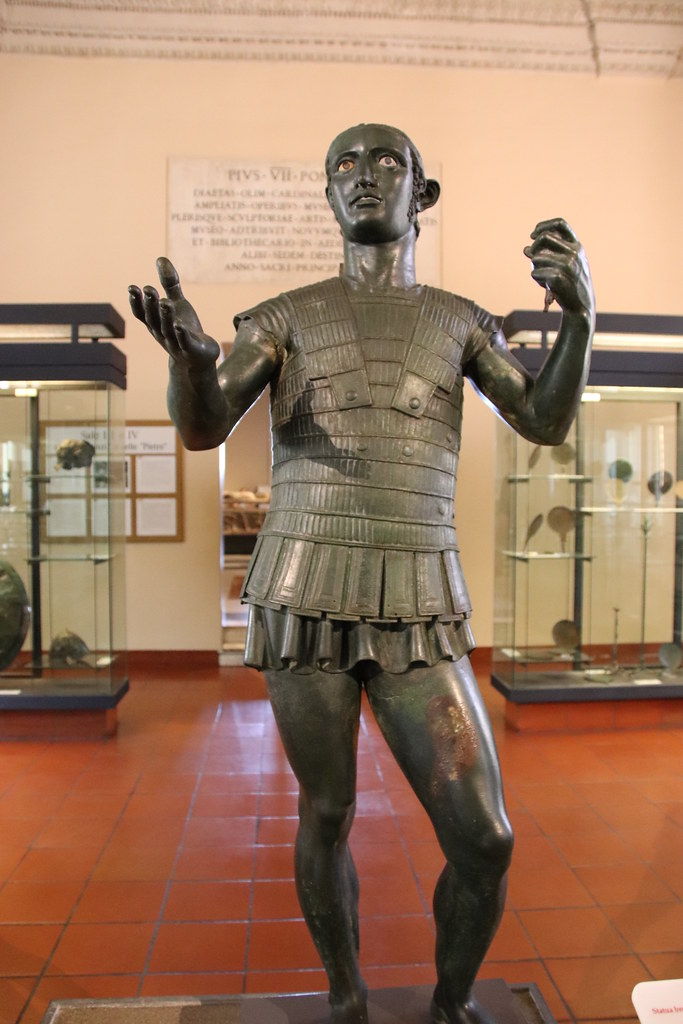
7. Mars of Todi, Etruscan Museum
This ancient Etruscan statue is a an extremely rare bronze depicting a warrior in armor. The nearly life size statue was found in the Umbrian town of Todi. It only survived because, after being struck by lightning, it was deemed sacred and buried in a stone-lined coffin
Dating from the 5th century B.C., Mars of Todi is one of the largest Etruscan statues in history. The sculpture is notable for its lifelike quality and realistic musculature.
The warrior stands in a classic contrapposto pose. He appears about to speak. He originally held a spear, which is exhibited separately.
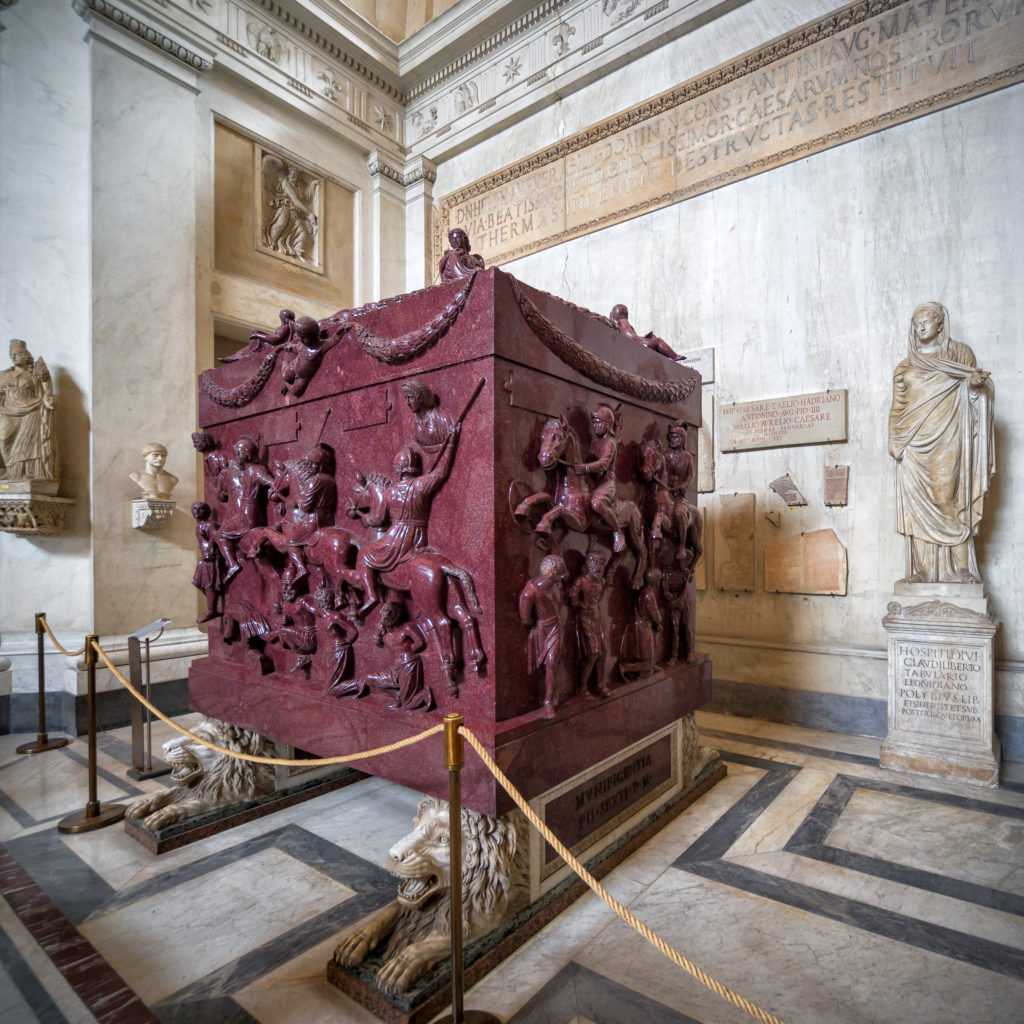
8. Sarcophagus of Helena
This monumental red porphyry sarcophagus is thought to have held the remains of Helena, the mother of Constantine the Great. She died around 335 A.D.
In 1777, the sarcophagus made its way to the Vatican. It was restored by Gaspare Sibilla and Giovanni Pierantoni and mounted on four lions carved by Francesco Antonio Franzoni.
According to legend, Helena, a Christian, made a pilgrimage to Jerusalem. There, she discovered the True Cross and brought a fragment of it back. It’s a story that scholars almost universally reject as untrue.
The coffin is carved with military scenes. It depicts Roman soldiers on horseback and barbarian prisoners. On the top, cupids hold garlands and two lions sleep.
Because the sarcophagus is so military in decoration, some scholars have theorized that it was originally made for a male member of the Imperial family, such as Helena’s husband, Constantius Chlorus, or Emperor Constantine himself.
READ: History of the Roman Emperors
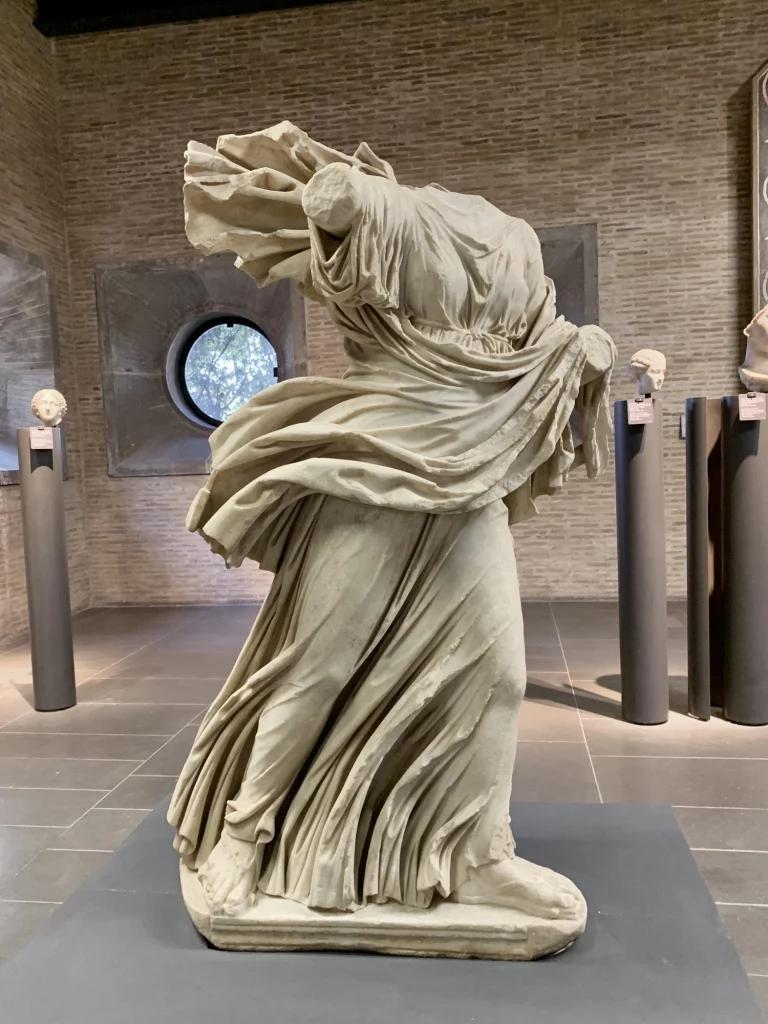
9. Chiaramonti Niobid, Gregorian Profanio Museum
This stunning sculpture in the Vatican Museums is a Roman copy of a Greek original. It depicts one of the daughters of Niobe, the Queen of Thebes. It shows the girl running to escape the arrows of Apollo and Artemis.
According to Greek myth, a fertile Niobe had 14 children. She considered herself to be superior to Leto, who only bore Zeus two children, Apollo and Artemis.
The pair decided to punish Niobe for offending their mother. They hunt down and kill Niobe’s children with arrows.
This figure is probably a copy of a statue from the age of Hadrian, when many group sculptures of Niobids were made. The most complete set of Niobids is housed in the Uffizi Gallery in Florence.
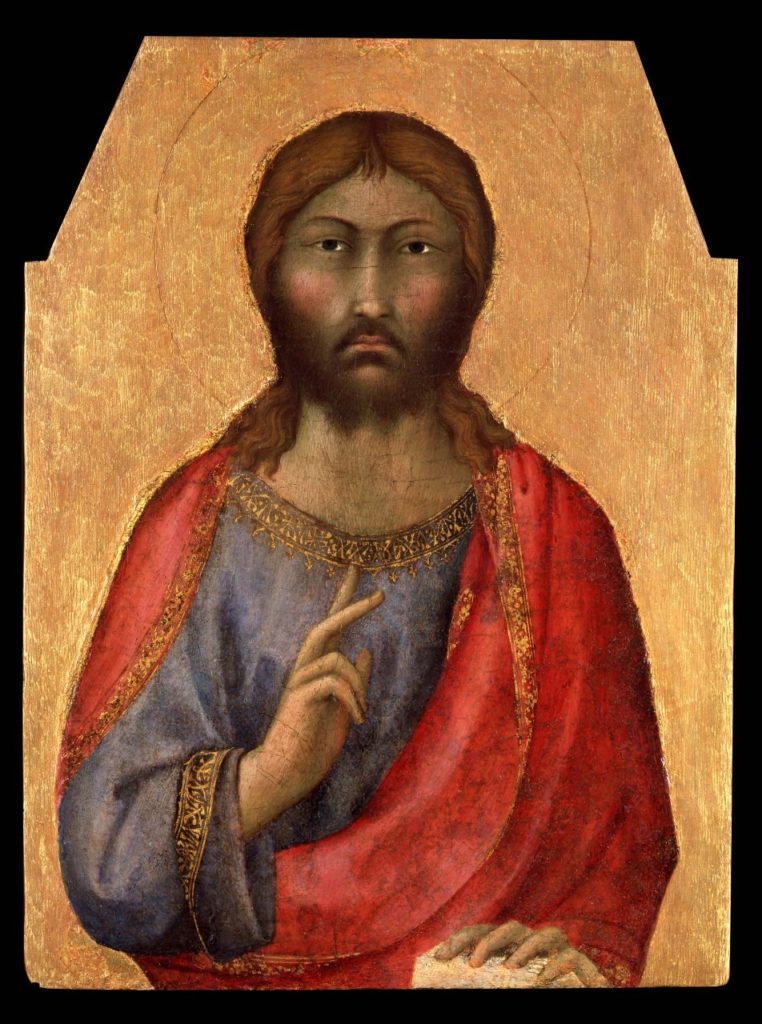
10. Simon Martini, Christ the Redeemer, Vatican Pinacoteca
Simone Martini is one of the most important painters of the Early Renaissance period, hailing from Siena. This small panel hidden in the Vatican Pinacoteca is the perfect example of Martini’s spare and elegant style, with an emphasis on blue and red colors.
The painting is a half length figure of Christ in what is known as the Salvator Mundi (Savior of the World) pose. His left hand rests on a bible. His right hand is held up in a blessing. Christ wears flowing robes with detailed gold filigree on the edges.
The panel is similar to Martini’s most famous work, the Maesta in the Palazzo Pubblico in Siena.
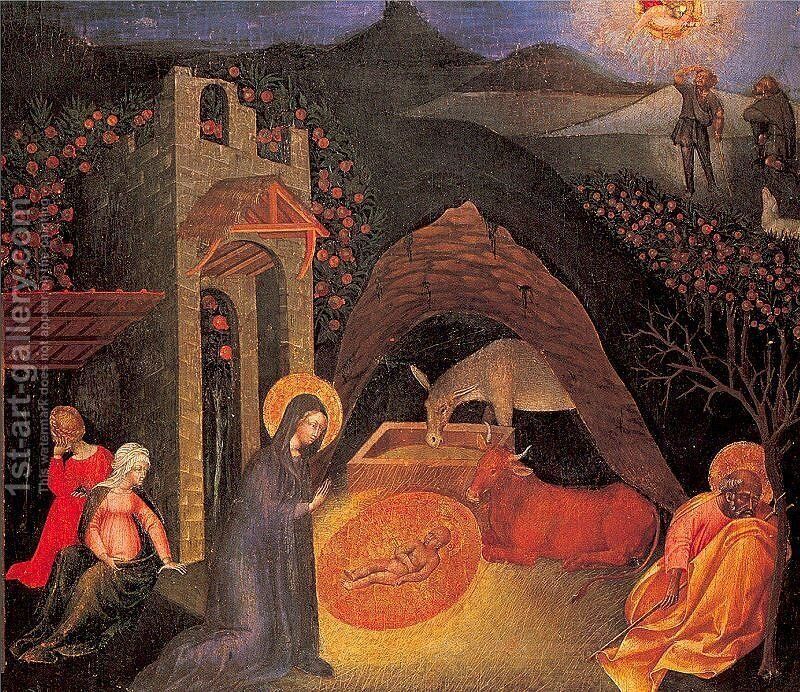
11. Giovanni di Paolo, The Nativity, Vatican Pinacoteca
Giovanni di Paolo is another Sienese painter from the quattrocento. He was known for his imaginative compositions, miniaturist technique, and pictorial storytelling.
Nativity depicts the Christmas legend, the story of Christ’s birth. It’s an extremely rare nocturnal scene, illuminated solely by celestial rays.
At the top, angels announce Christ’s birth to the shepherds. Thornless red rose bushes border the stable, a symbol of Christ’s passion.
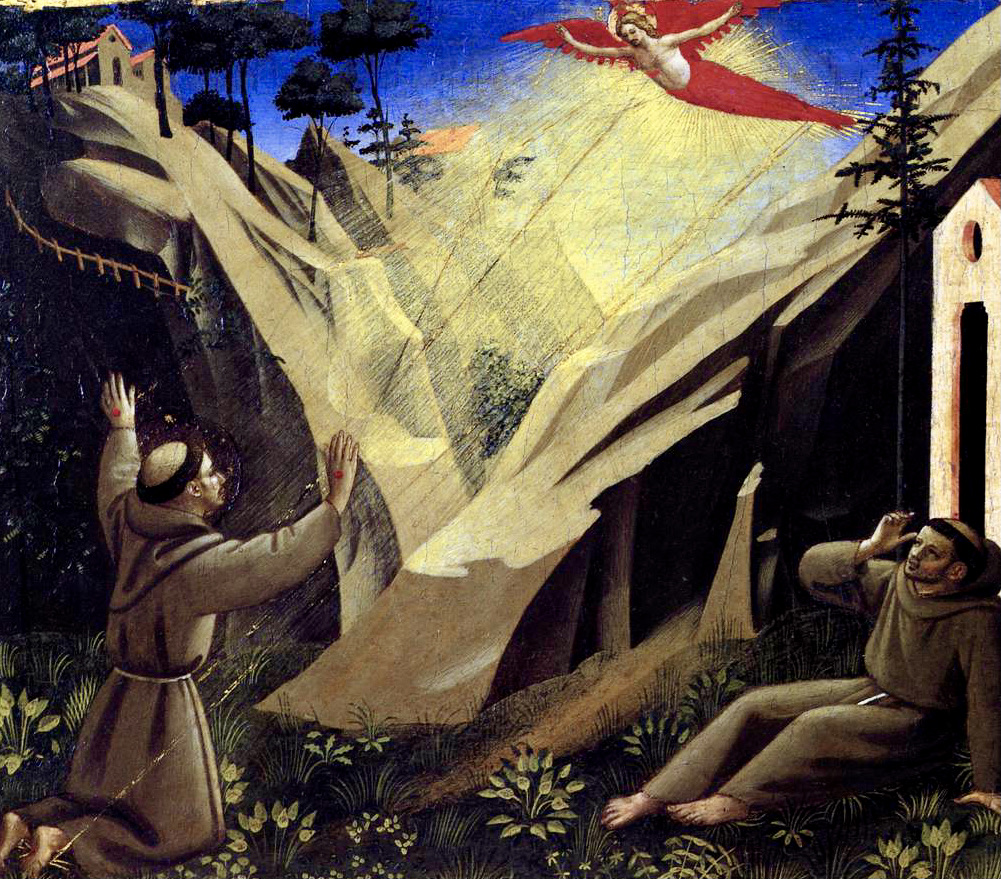
12. Fra Angelico, St. Francis Receiving the Stigmata, Vatican Pinacoteca
This is another beautiful Fra Angelico work. In this painting, St. Francis is given the stigmata, which are wounds corresponding to the crucifixion wounds of Christ.
The saint is on the left in a rocky landscape. Red rays of light from an angel pierce his hands and feet. The only light is emitted from the angel.
This painting was once in the Basilica of St. Francis of Assisi.
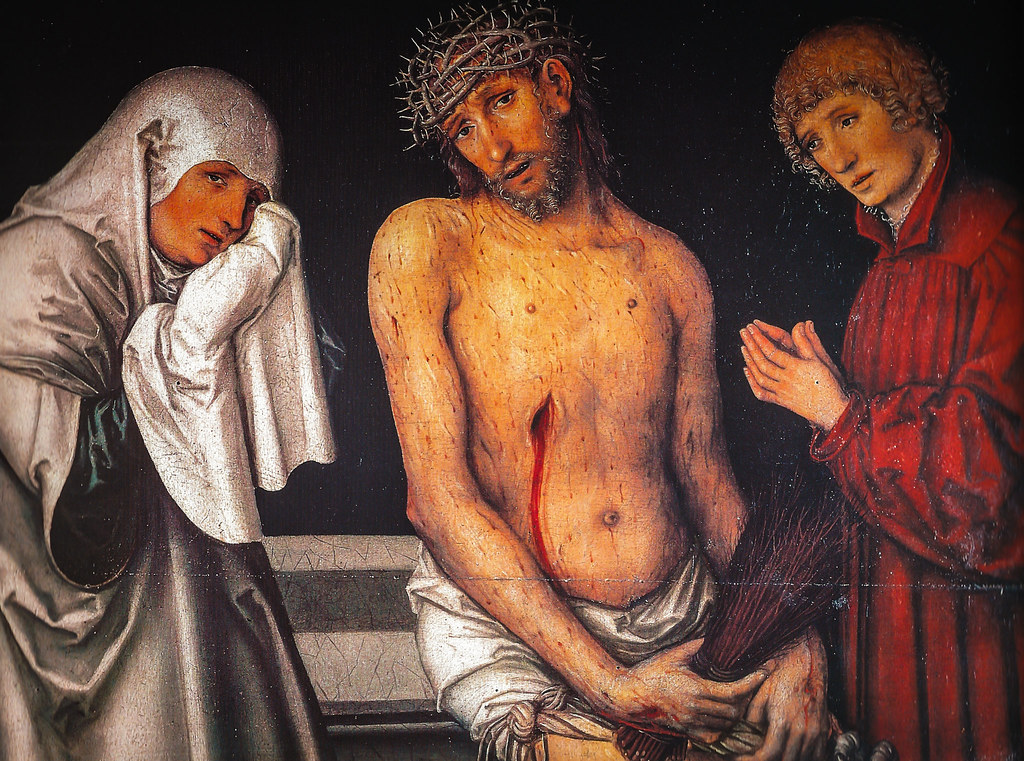
13. Lucas Cranach the Elder, Pieta, Vatican Pinacoteca
Lucas Cranach the Elder was one of the greatest German painters of the Renaissance. He was court painter to the Electors of Saxony for most of his career, and is known for his portraits. His Pieta is one of the few non-Italian works of art at the Vatican.
Cranach depicts Christ as the Man of Sorrows, a man of physical and spiritual suffering. Christ sits on a coffin, his body showing his terrible wounds. A crown of thorns is on his head.
The black background draws your attention to his gaping wound and the stigmata on his hands.
14. Paolo Veronese, The Vision of St. Helena, Vatican Pinacoteca
Veronese was an Italian Renaissance painter based in Venice, a master along with Titian and Tintoretto. He’s known for extremely large history paintings of religion and mythology, such as The Wedding Feast at Cana in the Louvre.
The painting depicts Saint Helena, the mother of Emperor Constantine. She is known as the first Roman noble to be baptized.
Helena is wrapped in shimmering and opulent garments with vibrant colors. She’s shown in a palace-like building. Veronese liked to combine religious motifs with worldly splendor. Helena is shown fast asleep, seated with her head resting on her hand.
In her sleep, she sees a vision of the location of the True Cross on which Christ was crucified. The cross from her vision is materialized and supported by a winged cherub.
The iconography is different than was traditionally used in Venetian art, where the Helena is shown standing beside the cross. The painting, which dates to about 1580, is part of the mature production of the great Venetian artist.
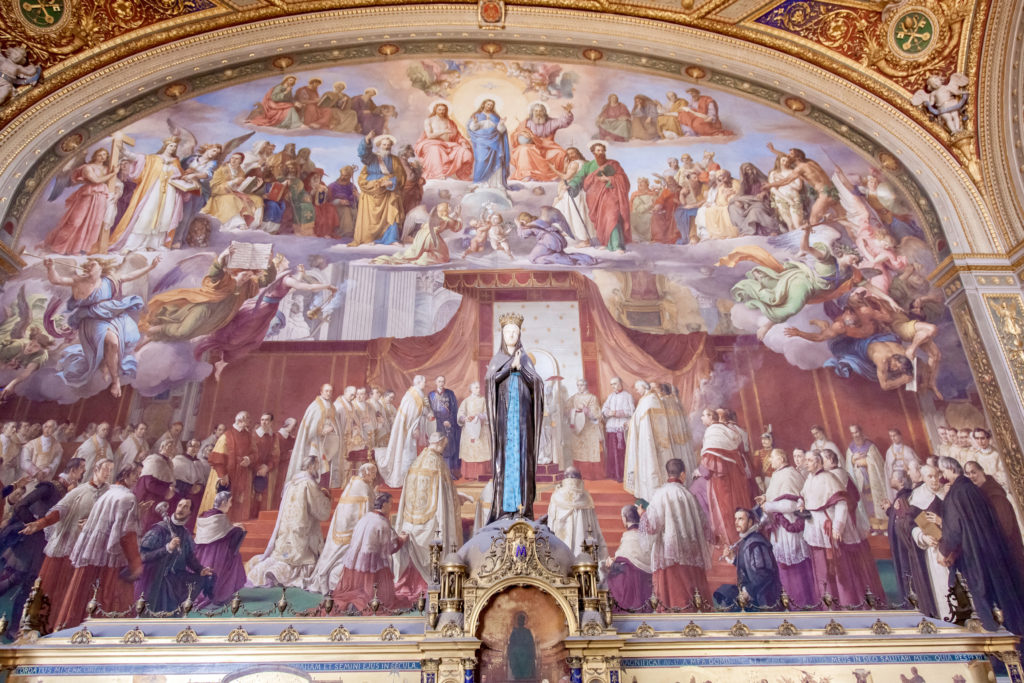
15. Room of the Immaculate Conception
Pope Pius X declared the dogma of the immaculate conception in 1854. That dogma posits that Mary was free of original sin. Pius decided to celebrate the announcement with a series of frescos. He chose a large room next to the Raphael Rooms.
Pius commissioned Francesco Podesti to paint the frescos. They took nearly 10 years to complete. There are allegorical scenes relating the virgin.
The largest and most famous images are the Proclamation of the Dogma of the Immaculate Conception and The Crowning of Mary. The frescos were restored in 2007 and feature vibrant colors.
16. Aldobrandini Wedding Fresco, Sacred Museum
The Aldobrandini Wedding Fresco is a beautiful and enigmatic ancient Roman fresco. It’s one of the most important paintings from the early Roman Empire.
The wedding fresco dates to the age of Augustus, Rome’s first emperor. It was found in 1610 in the ruins of a Roman home on the Esquiline Hill and detached. In 1818, Pius VII acquired the fresco from the Aldobrandini family.
The fresco is generally thought to portray a wedding scene. Aphrodite is in the center, attempting to calm a distraught bride who fears her wedding night. A god, or perhaps the groom, is on the threshold.
But other scholars think the fresco depicts a scene from Hippolytus Stephanephoros, a Greek tragedy written by Euripides around 428 B.C.
In that play, the bride to be is Phaedra, a princess from Crete. She was in love with Hippolytus, the man shown to the right. But Phaedra is betrothed to Theseus, Hippolytus’ father. Aphrodite comforts the lovelorn Phaedra.
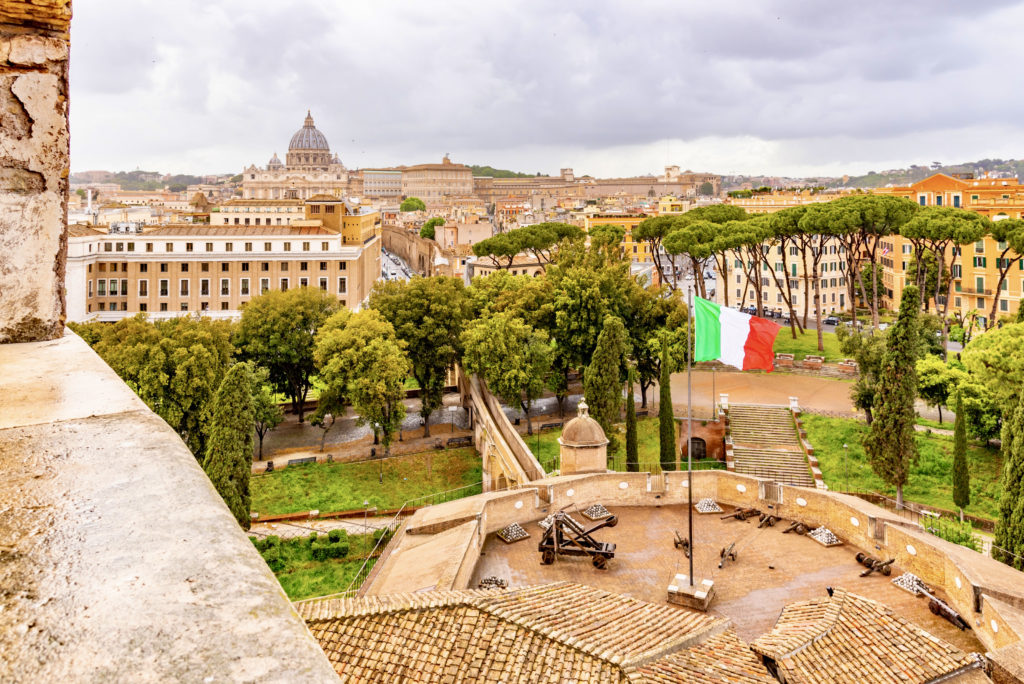
17. The Passetto di Borgo
There’s a secret passageway to escape the Vatican in times of threat. The Passetto del Borgo is a secret corridor that leads from Vatican City to the nearby Castle Sant’Angelo.
The Passetto di Borgo served as a secret escape route for popes in at least two instances. In 1494, Pope Alexander VI used it to flee during Charles VIII’s invasion.
During the siege of Rome in 1527, Pope Clement VII used it to escape when Charles V killed the Swiss Guard. The pope didn’t leave the fortress-castle for six months.
The Passetto di Borgo even made an appearance in Dan Brown’s bestselling novel Angels & Demons. You can only see the Passetto on a special guided tour.
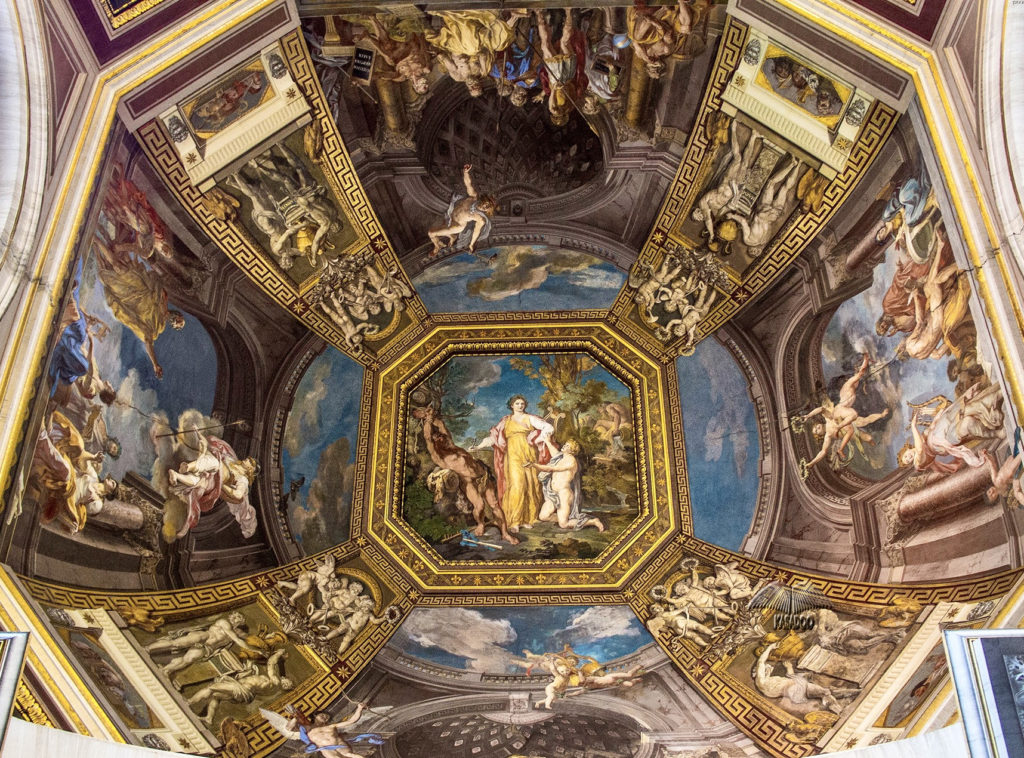
18. Hall of the Muses, Pio-Clementine Museum
Opened in 1784, the Hall of Muses is another hidden gem in the Vatican. This room houses statues of muses that were discovered near Tivoli.
On the vaulted ceiling is an illusionistic painting telling the story of Apollo and Marsyas by Tommaso Conca.
Marsyas had the audacity to challenge the god Apollo to a musical duel. Despite Marsyas being given a flute by Athena, the muses judge Apollo the winner. Apollo avenges himself by flaying Marsyas alive.
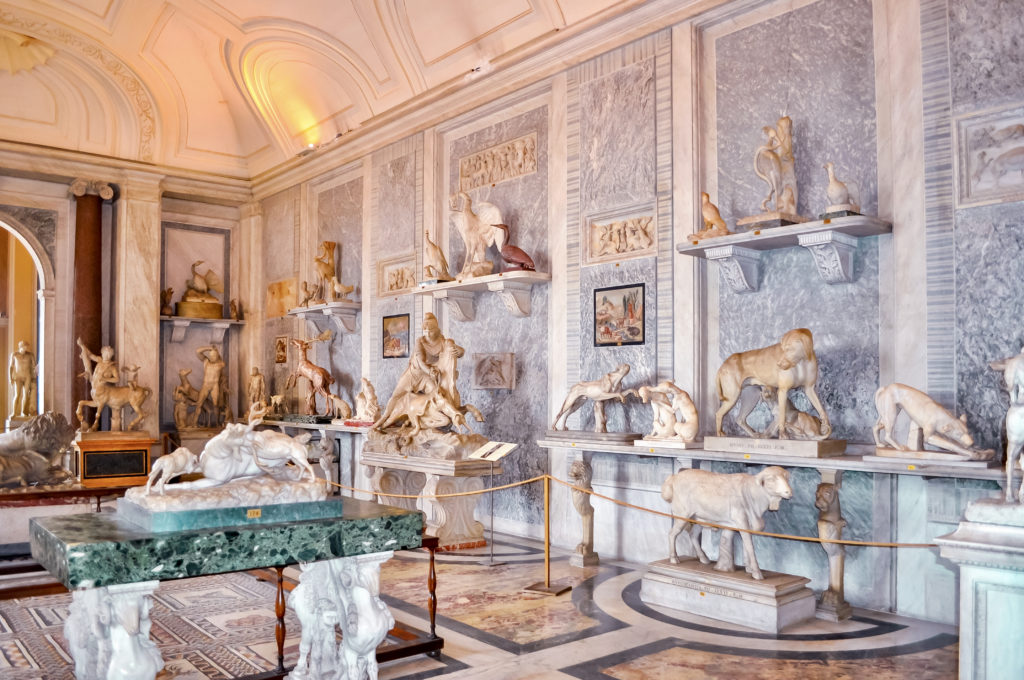
19. Hall of Animals, Pio-Clementine Museum
Pope Pius VI had two rooms dedicated to the Hall of the Animals. The aim was to create a “stone zoo.”
There are many antique works of art. Many artists worked on the sculptures in this display during the 1700s. Some were restored or received.
Some of the animals are realistic. Others are fantastical. In the center is an ancient mosaic floor.
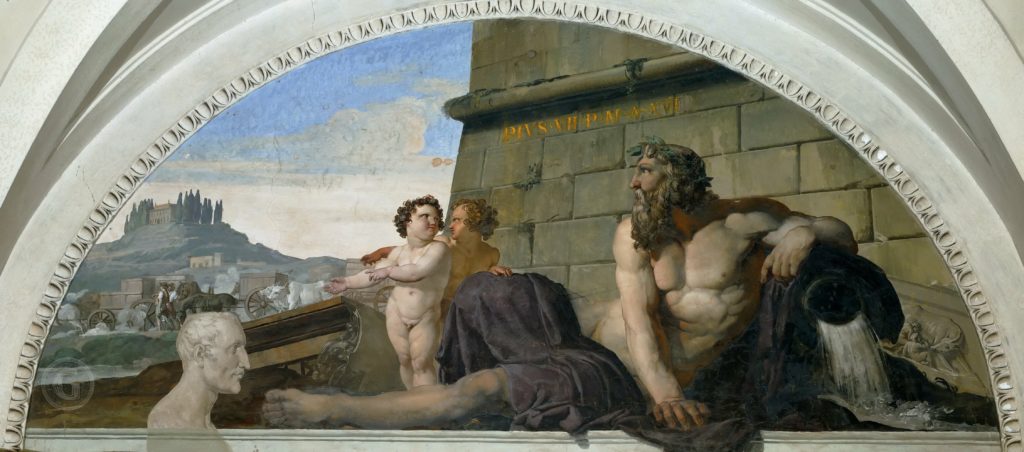
20. Francesco Hayez, The Return of the Art Works To Rome, Chiaramonti Museum
One of the darkest events in the history of the Vatican was the plundering of art by Napoleon. Napoleon occupied the Vatican in 1797.
He absconded with over 500 works of art, including treasures like Laocoon and Apollo Belvedere. Napoleon put them in the Louvre, which he had renamed the Napoleon Museum. About half of the works were returned in 1815, after Napoleon was defeated in the Battle of Waterloo.
READ: Facts About the Louvre
Hayez completed the painting in the lunette above in 1816. Hayez is most famous for The Kiss in the Brera Museum in Milan.
In this painting, he depicts the restitution of the art works, watched over by a man personifying the Tiber River. Two putti point to the train of ox-drawn carts with the returned treasures.
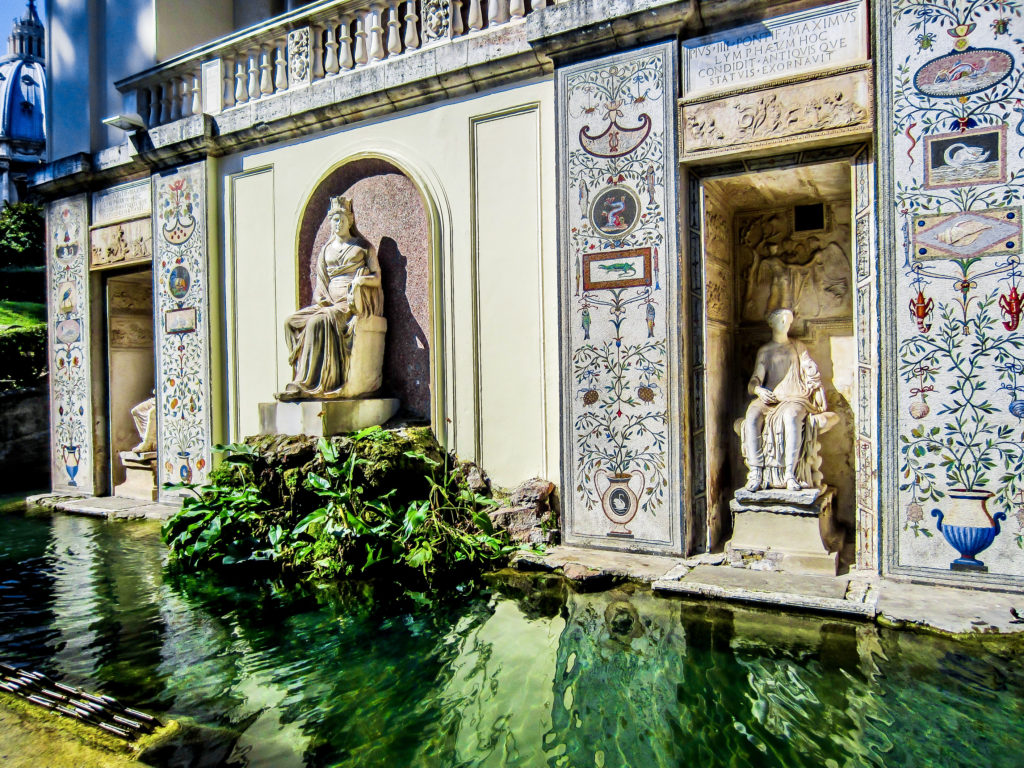
21. Casino of Pius IV, Vatican Gardens
Like many Renaissance popes, Pius IV had a taste for fine art. He built a casino, which is a garden house, on the western side of the papal palace. It was intended as a lush escape pad from the formalities of the Vatican palace.
The beautiful villa is designed in a Mannerist style by architect Pirro Ligorio. The complex comprises two buildings — the villa itself and a loggia to enjoy views. Between the two buildings is a small oval courtyard with built in benches.
In keeping with the Mannerist style of the late Renaissance, the villa is adorned with lavish stucco, sculptures, and frescos of mythological scenes. The interiors are lavishly decorated with paintings and stucco work by Federico Barocci and Federico Zuccaro.
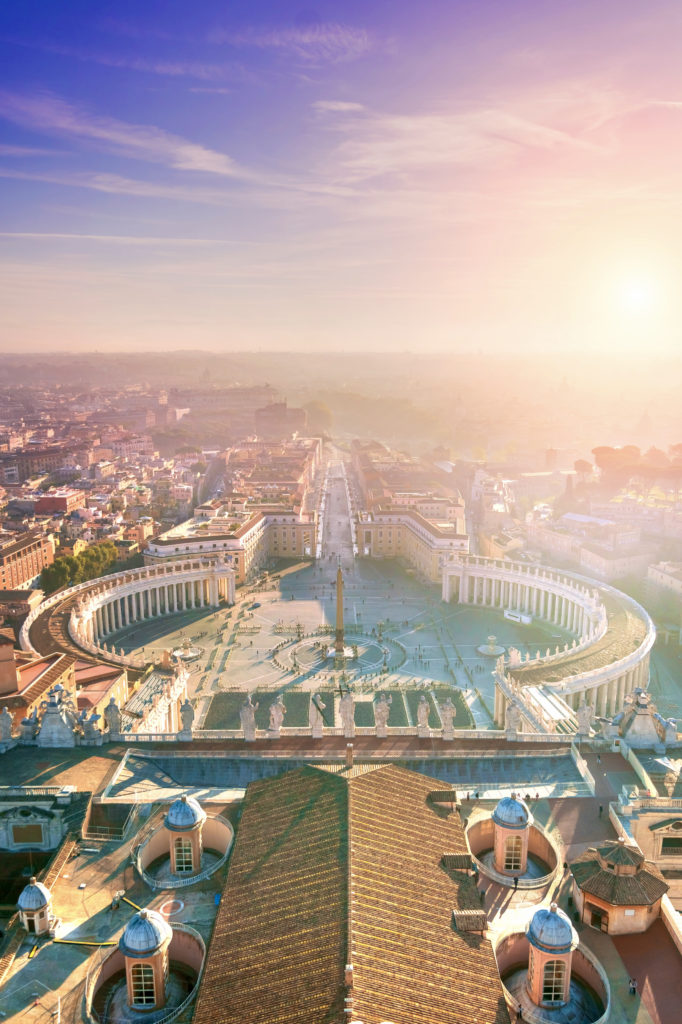
Vatican Tours
You can take a guided tour of the Vatican or then do a DIY tour. I’ve done the Vatican many time both ways. If you’re a first timer, you’ll likely want a tour.
If you don’t book a guided tour, you absolutely must pre-book a skip the line tickets. Or else you’ll be stuck in line for hours unless it’s the dead of winter.
Here are your Vatican tour options. You can pick a tour tailored to your own interests and museum going tastes.
- a 2.5 hour overview on a skip the line small group guided tour
- a 3 hour no wait tour that also includes the Raphael Rooms
- a 3.5 hour tour Vatican visit with a guided tour of St. Peter’s Basilica
- a 3 hour Friday night tour of the Vatican
- a Vatican tour that includes a climb of the dome of St. Peter’s Basilica
- a small group Sistine Chapel first entry experience with Vatican Museums (good for early birds)
- a 2-3 hour private tour of the Vatican
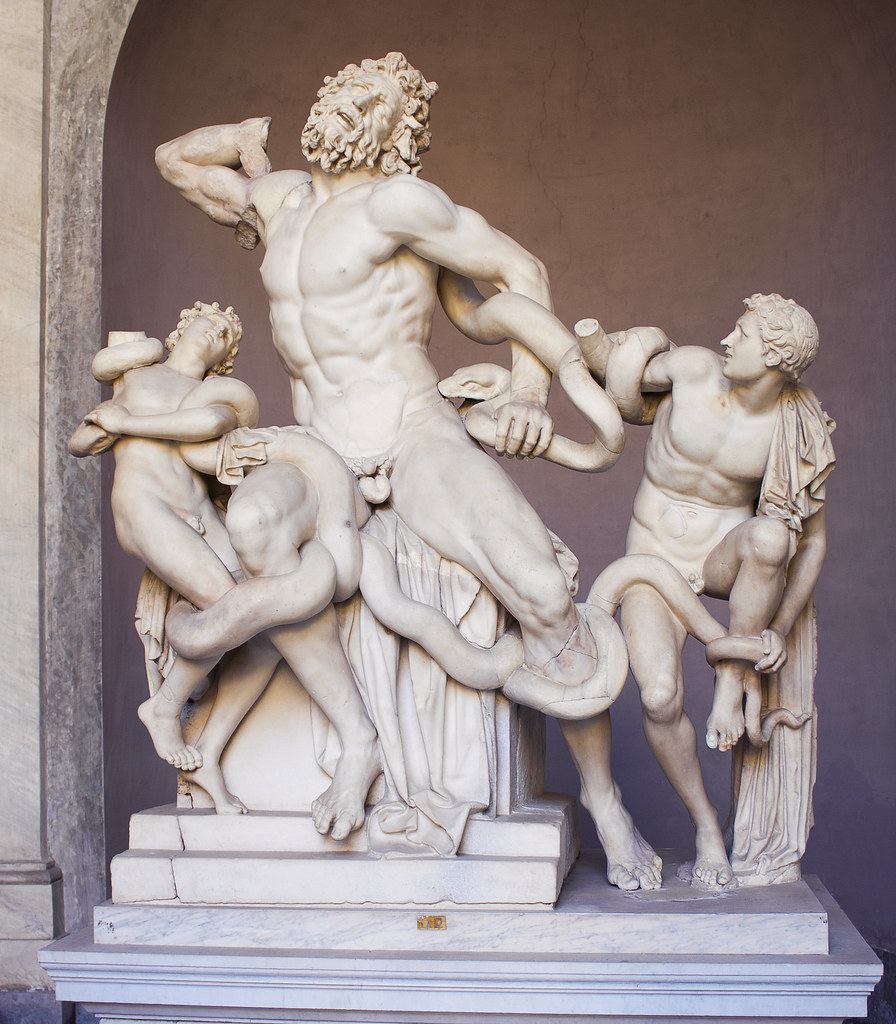
If you’re taking a guided tour, you’ll access St. Peter’s Basilica from the back left corner of the Sistine Chapel. Once inside the basilica, you cannot re-enter the Vatican Museums.
If you want to do some exploring on your own after a tour, do not enter the Sistine Chapel because you cannot re-enter the museums. Rather, see the hidden gems in the Vatican and, when you’re done, head to the Sistine Chapel.
I hope you’ve enjoyed my guide to the hidden gems of the Vatican. You may enjoy these other Vatican City guides:
- Masterpieces of the Vatican
- Guide to the Vatican Pinacoteca
- Guide to the Vatican’s Raphael Rooms
- Guide to the Sistine Chapel
- Underpants in the Sistine Chapel
- Guide to St. Peter’s Basilica
- 1 day itinerary for Vatican City
- Guide to Castle Sant’Angelo
- Famous sculptures at the Vatican
If you want to see the hidden gems of the Vatican, pin it for later.

